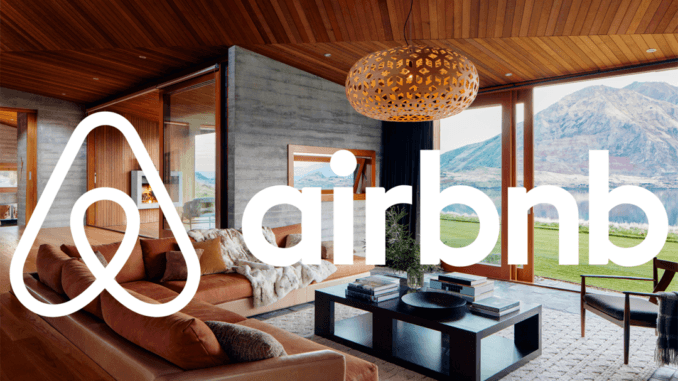11 min read

Investing in a short-term rental can be a great way to build wealth and generate a passive income. Financing one, however, isn’t always easy. Traditional mortgages often don’t work for Airbnb and vacation rentals, especially if you’re self-employed or don’t have a W-2 income. This doesn’t mean you’ve hit a wall though.
Many investors turn to short-term rental loans in such situations. This guide will show you how short-term rental loans work and how you can secure one for your rental property. ____________________________________________________________________________
Key Takeaways
![]() Short-term rental loans allow you to finance Airbnb properties based on rental income.
Short-term rental loans allow you to finance Airbnb properties based on rental income.
![]() DSCR loans do not require income verification, are faster to approve, and have a minimum DSCR of 1.25x.
DSCR loans do not require income verification, are faster to approve, and have a minimum DSCR of 1.25x.
![]() Lenders look for a credit score of 620+, 3–6 months of cash reserves, and properties in STR-friendly locations.
Lenders look for a credit score of 620+, 3–6 months of cash reserves, and properties in STR-friendly locations.
![]() Tax benefits include mortgage interest deductions, depreciation, cost segregation studies, and 1031 exchanges to reduce taxable income.
Tax benefits include mortgage interest deductions, depreciation, cost segregation studies, and 1031 exchanges to reduce taxable income.
![]() Alternative financing options for investors who don’t qualify for DSCR loans include HELOCs, personal loans, and crowdfunding.
Alternative financing options for investors who don’t qualify for DSCR loans include HELOCs, personal loans, and crowdfunding.
____________________________________________________________________________
What Are Short-Term Rental Loans? (And How Do They Work?)
A short-term rental (STR) loan is designed specifically for properties rented out nightly or weekly. Unlike traditional mortgages, which rely heavily on personal income and employment history, STR loans focus on the property’s rental income potential to determine eligibility.
How Are STR Loans Different from Traditional Mortgages?
Below in the table, there's a side-by-side comparison between short-term rental loans and traditional mortgages.
Types of STR Loans
When it comes to short-term rental financing, there’s no one solution.
Here are some of the most common types of loans with their key benefits and potential drawbacks:
|
Loan Type |
Best For |
Key Benefits |
Potential Drawbacks |
|
Investors qualifying based on rental income |
No personal income verification, faster approvals |
Requires strong rental income to qualify |
|
|
2. Portfolio Loans |
Investors with multiple properties |
Finance several properties under one loan |
Higher interest rates than DSCR loans |
|
Investors buying and renovating STRs |
Short-term financing for quick purchases and upgrades |
Higher interest rates, must refinance into a long-term loan |
Lender Expectations for STR Loans
While STR loans offer considerable flexibility, lenders still require minimum requirements, such as:
- Rental History: Many lenders require at least 6+ months of proven rental income, but some accept projected income.
- Credit Score: A minimum score of 620+, but higher scores get better rates.
- Cash Reserves: Expect to show 3–6 months of mortgage payments in reserves.
- Property Location: Some lenders only approve loans in tourist-friendly markets or areas without STR restrictions.
Hybrid Financing Strategy: Using DSCR & HELOC Together
Most investors overlook a key financing tactic: combining a DSCR loan with a Home Equity Loan of Credit (HELOC).
Here’s how you can use this approach:
- Acquire the property with a DSCR loan
- Use a HELOC for renovations
- Increase nightly rates & refinance
Why Choose DSCR Loans for Short-Term Rentals?
For many investors, DSCR loans are the most accessible way to finance short-term rentals.
How DSCR Loans Work?
Lenders use the DSCR to determine whether a property's rental income can cover its mortgage payments. The formula is simple:
You can also use an Airbnb ROI calculator to make an estimate.
DSCR Loans vs. Traditional Mortgages
In below table, we have compared DSCR loans with traditional mortgages:
A DSCR loan is the best option if you’re looking to scale your short-term rental business without the hassle of income verification. You can learn more about how DSCR loans compare to other financing options here.
How Do I Qualify for a Vacation Rental Loan in 2025?
Getting approved for an STR loan is much easier than getting a traditional mortgage. However, lenders still require a few key requirements, have a look at the table below:

Red Flags That Can Affect Loan Approval
![]() Homeowners Association (HOA) & Local Restrictions: Many HOAs and cities have strict rules regarding short-term rentals. Always check zoning laws before applying.
Homeowners Association (HOA) & Local Restrictions: Many HOAs and cities have strict rules regarding short-term rentals. Always check zoning laws before applying.
![]() Seasonal Market Risks: Properties in ski towns may have inconsistent rental income, which could affect DSCR calculations.
Seasonal Market Risks: Properties in ski towns may have inconsistent rental income, which could affect DSCR calculations.
![]() High Personal Debt: While DSCR loans don’t rely on DTI ratios, excessive personal debt might impact your loan terms.
High Personal Debt: While DSCR loans don’t rely on DTI ratios, excessive personal debt might impact your loan terms.
Best Markets for Short-Term Rentals in 2025
The most profitable short-term rental markets have high tourist demands and strong occupancy rates. 2 of the best markets include:
Phoenix, AZ
 Phoenix attracts a steady stream of visitors due to its corporate travel market, major sporting events, and year-round warm weather. It has an average daily rate (ADR) of $235.7 and an occupancy rate of 55 %. Investors can expect an annual revenue of approximately $19.8K per property.
Phoenix attracts a steady stream of visitors due to its corporate travel market, major sporting events, and year-round warm weather. It has an average daily rate (ADR) of $235.7 and an occupancy rate of 55 %. Investors can expect an annual revenue of approximately $19.8K per property.
Gatlinburg, TN
Gatlinburg remains one of the highest cash-flow markets for short-term rentals, thanks to consistent tourism and strong demand for vacation cabins. With an ADR of $328.3 and an occupancy rate of 58 %, you can generate an annual rental income of almost $47.3K.
How To Get Approved: A Step-by-Step Guide
Here are 5 simple steps you can follow to increase your chances of approval.
Step 1. Run a Rental Income Analysis
Lenders want to see whether your property can generate sufficient income to cover the mortgage. You can use tools such as Mashvisor to estimate:
- Average nightly rates
- Occupancy rates
- Monthly rental income potential
Step 2. Compare Lenders
Since not all lenders will offer you the same terms, it’s essential to shop around. Your two main options include:
- Portfolio Lenders: More flexible but may have higher interest rates.
- Institutional Lenders: Stricter requirements but may offer better long-term financing options.
Step 3. Prepare Your Documentation
Lenders will require you to have your basic documentation ready to verify your eligibility. Make sure you’ve got these documents at hand:
- Credit report
- Lease agreements
- Tax returns
- Proof of reserves
Step 4. Submit Pre-Approval
Once you’ve chosen your lender, you need to submit your pre-approval application. Many DSCR lenders offer pre-approvals in as little as 72 hours.
Step 5: Close and Fund Your Loan
After approval, your lender will finalize the loan. On average, closing and funding take 14–21 days.
Once the loan is funded, you’re ready to start renting out your property and earning income.
Tax Benefits of Short-Term Rental Loans (Most Investors Miss This)
Most investors overlook this, but investing in STR loans comes with significant tax benefits. These include:
1. Mortgage Interest Deduction
One of the biggest advantages is that you can deduct mortgage interest from your taxable income.
2. Depreciation Deductions
Since rental properties lose value over time, the IRS allows you to deduct depreciation as an expense.
3. Cost Segregation Studies
Most investors don’t realize they can accelerate depreciation through a cost segregation study.
Instead of spreading deductions over 27.5 years, a cost segregation study breaks the property into different asset classes, allowing you to deduct more expenses upfront.
4. 1031 Exchange
A 1031 exchange allows investors to defer capital gains taxes when selling one rental property and reinvesting in another.
Alternative Financing Options (When DSCR Isn’t the Answer)
While DSCR loans are a great choice for many investors, they may not always be the right fit. Other options include:
1. Home Equity Line of Credit (HELOC)
A HELOC allows you to borrow against the equity in an existing property and use the funds for your short-term rental investment.
2. Personal Loans
Here's how you get personal loan: If you have strong credit (700+), a personal loan can be a quick way to access funding for property improvements or closing costs.
3. Crowdfunding & Private Investors
Real estate crowdfunding platforms like Fundrise allow investors to raise capital from multiple backers. You can also seek private investors to help finance your property.
Case Study: How a Miami Investor Bought 3 AirBnBs with $0 Down?📈
Many investors assume they need a large amount of savings to buy a short-term rental, but that’s not always the case.
Alex, a self-employed entrepreneur in Miami, wanted to enter the Airbnb market. He didn’t have traditional W-2 income, so instead of waiting to save up, he leveraged DSCR loans to acquire three short-term rentals with $0 out-of-pocket.
Here’s how he did it:
- Used a DSCR Loan for His First Airbnb
- Found a property in Miami’s tourist zone, projected to earn $8,500/month on Airbnb.
- Secured a DSCR loan with 20% down.
- Let Rental Income Build Equity
- After six months, his Airbnb was fully booked and generating $10,000+ per month.
- Increased property value through renovations and strong occupancy rates.
- Refinanced & Pulled Cash Out
- Used a cash-out refinance on the first property to recover his initial investment.
- Applied for another DSCR loan to purchase a second Airbnb.
- Repeated the Process
- Within 18 months, Alex refinanced again and used the profits to acquire a third short-term rental. Alex can eventually branch out into international real estate markets or wealth programs such as Dominica citizenship by investment to secure alternative residency options while expanding their portfolio.
FAQs🔎
Can I get a short-term rental loan with bad credit?
Yes, but your options may be limited. Most DSCR loan lenders require a credit score of at least 620. You may qualify for a hard money loan instead.
Do I need a property manager to qualify for a loan?
This depends on the lender. Some require investors to have a professional property management company, while others allow self-management as long as you can show consistent rental income.
Can I refinance my short-term rental loan later?
Yes. Most lenders allow refinancing, but many require a 6–to–12–month seasoning period before you can convert your existing loan into a new one.
Conclusion
DSCR loans make financing short-term rentals easier, but understanding the requirements and risks is crucial.
Ready to secure financing for your short-term rental? Apply for a loan with Truss Financial Group now!
Table of Content

Take your pick of loans
Experience a clear, stress-free loan process with personalized service and expert guidance.
Get a quote



